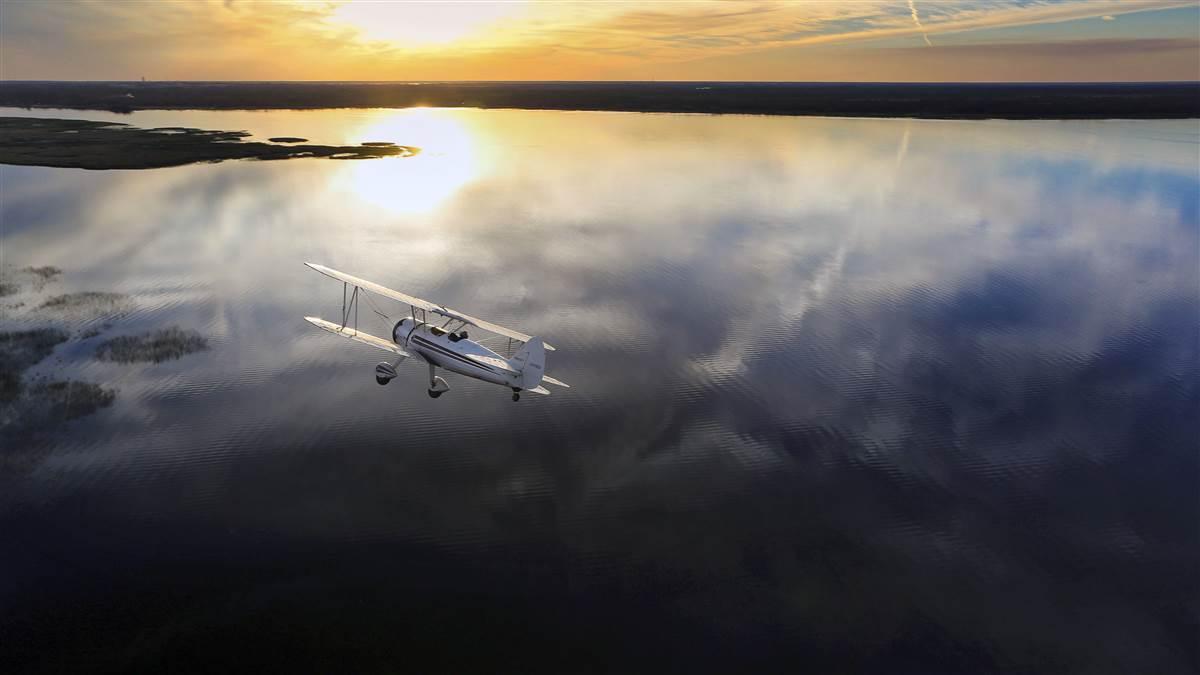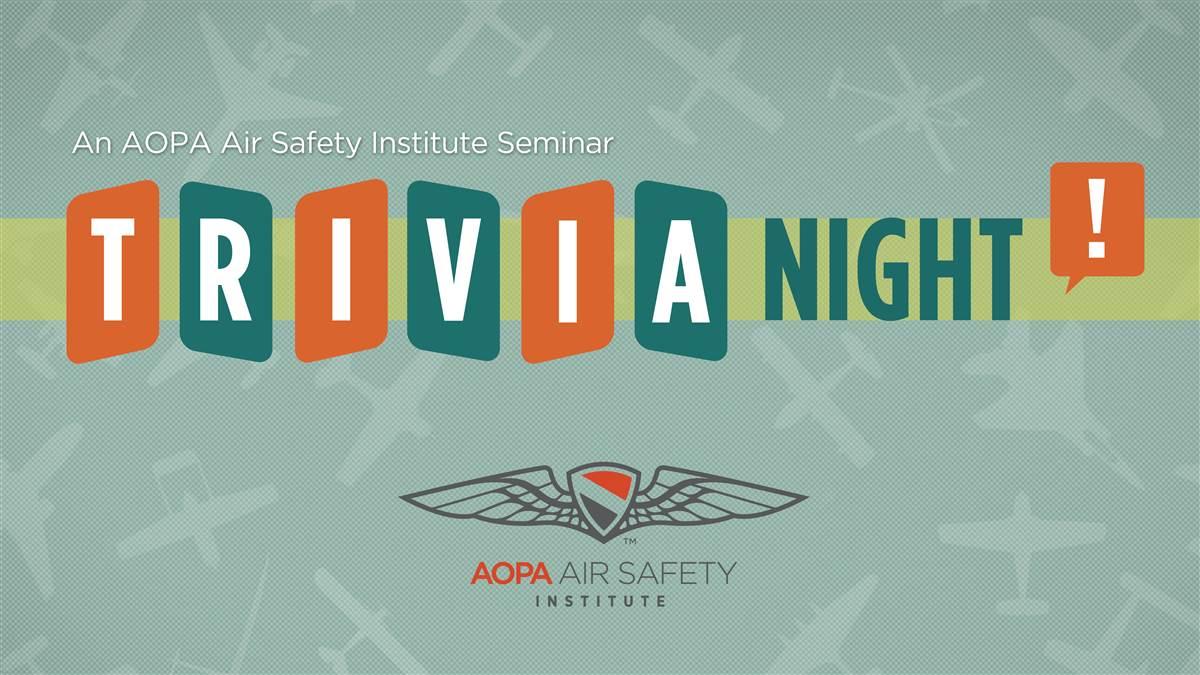Training News and Notes
Exploring the Everglades. A Stearman Model 75 biplane meanders over Lake Istokpoga near Sebring, Florida, its Lycoming R-680, 300-horsepower engine, rumbling and a swirling breeze blowing through its open cockpit. This Stearman is owned and flown by Walt Fricke, founder of the Veterans Airlift Command, a volunteer organization that provides free flights for wounded vets and their families.

WHAT: Stearman biplane
WHERE: The Everglades, Florida
PHOTOGRAPHER: Chris Rose
News
Tuskegee U. wins drone tech grant
Other grants helping STEM education in Alabama
By David Tulis
Tuskegee University is on a roll. The National Science Foundation awarded the Alabama institution $1.2 million in June for its Innovative Technology Experiences for Students and Teachers program to bring drone technology to local high school students and teachers.
In May the university received a separate National Science Foundation grant for nearly $500,000 to install flight simulators into nearby public-school classrooms for a three-year Fly High Your Math and Science Skills program.
The latest program, organized by the university’s computer science department, aims to annually teach 30 rising tenth- and eleventh-grade Macon County public school students how to tackle real-life problems using drone technology.
The new grant will allow six teachers per year from participating schools to take part in the academy, where they can observe students and then design classroom STEM course modules based on their findings.
“We’re located in Macon County, which is considered the ‘Alabama black belt,’ and we try to work with our local elementary, middle, and high schools and funnel resources back into them,” said communications specialist Teri Sumbry.
In addition to attaining STEM knowledge, the students will learn teamwork, leadership skills, problem solving, planning skills, ethical and safe practices, and public speaking. The hope is that participants “will also serve as role models and ambassadors for the STEM Academy and learn about careers in science, technology, engineering, and math,” Sumbry said.
Sumbry said the university recognizes that learning STEM concepts “is so important as far as the future and where the graduates will be. We need more STEM educators, and we need more STEM jobs.”
The Alabama institution has a long aviation history and is known for training the African-American Tuskegee Airmen of World War II. The university was founded in 1881 by Booker T. Washington and is home to approximately 3,000 students from the United States and 30 foreign countries.
FAA NEWS
Rite of passage
FAA restores birthday solos
Following a request from AOPA, the FAA has once again made it possible for student pilots to solo on their fourteenth or sixteenth birthday, depending on the type of aircraft they are operating.
Changes to the application process implemented in April meant that pilots-in-training couldn’t apply for a student pilot certificate until the first day of eligibility—their fourteenth birthday for gliders and balloons, or their sixteenth birthday for all other aircraft. Because of TSA security vetting requirements, applicants could not get the certificate the same day they applied, making it impossible for them to solo on their birthday.
“Soloing on their birthday is a huge milestone for many young pilots, the same way getting a driver’s license on their birthday is for many American teen-agers,” said Justin Barkowski, AOPA director of regulatory affairs.
A student pilot can submit a paper application up to 90 days before his or her eligible birthday, allowing time for the application to be processed and the student to be vetted by the TSA before his or her birthday. Once approved, the FAA will provide the student with a temporary authorization to exercise the privileges of a student pilot certificate through the Airmen Online Services section of its website. The temporary authorization will be available on the student’s birthday and remain valid for 60 days. The FAA will mail a permanent certificate to the student.
The paper application process is a temporary fix to get students back in the air on their birthday. The FAA eventually will allow flight instructors to process an application through IACRA, the FAA’s web-based application system, up to 90 days before the student’s eligible birthday. A temporary student pilot certificate will then be available for download on the student’s birthday, with a permanent certificate being sent by mail. The FAA expects to have this update to IACRA completed by November 1.
AOPA News
AOPA Foundation announces 2016 scholarship recipients
Grants range from $2,500 to $12,000
Fifteen individuals have been selected as winners of the 2016 AOPA Flight Training Scholarships, a program designed to help aviation students of all ages earn a pilot certificate. The scholarships are funded by donations to the AOPA Foundation.
The 2016 winners will receive grants ranging from $2,500 to $12,000.
Gavin Wanless, 18, of Fort Worth, Texas, is the recipient of the Noe-Singer Flight Training Scholarship. He plans to start a nonprofit mission flight organization.
Rebecca Cheek, 36, of Scottsbluff, Nebraska, has been awarded the Fred and Diane Fitts Memorial Flight Training Scholarship, sponsored by an endowment from the Corporate Aircraft Association, that will help her resume flight training.
William Schoeffler, 17, of Santa Rosa, California, is a recipient of a Sarah Wilson Flight Training Scholarship. He is a high school senior and an Eagle Scout.
Yitzchok Finkelstein, 17, of West Hempstead, New York, has been awarded a Sarah Wilson Flight Training Scholarship. The presolo student pilot recently graduated from high school.
Angela Rivera, 26, of Miami, Florida, is a recipient of a Richard R. and Gretchen E. Harper Scholarship in Memory of Richard R. Harper. She says flying gives her a way “to inspire women and girls and those who dare to dream.”
Brian Gustin, 53, of Prosser, Washington, is a recipient of a Richard R. and Gretchen E. Harper Scholarship in Memory of Richard R. Harper. He is a semiretired electrical engineer with experience in simulators and avionics.
Charles “Dozer” Reed, 43, of Keithville, Louisiana, is the recipient of a Sarah Wilson Flight Training Scholarship. A disabled veteran, Reed underwent six operations for damage to the spinal cord, and worked long and hard to regain medical certification, resulting in his resuming his flight training this year.
Kristen Dwiggins, 36, of Cary, North Carolina, has been awarded an Erral Lea Plymate Memorial Scholarship. She is an airport project manager and a presolo student pilot.
Accrina Grandin, 27, of Wilmington, North Carolina, has been awarded an Erral Lea Plymate Memorial Scholarship. The presolo student and her husband have been “chasing the dream” to fly together as professional pilots.
Damarni Tyrell, 19, of The Bronx, New York, is a recipient of an Erral Lea Plymate Memorial Scholarship. Tyrell flew three hours in a Diamond DA20 on the island of St. Croix; later he moved to New York City and continued flight training (in a Piper) and studied aviation maintenance.
Nathan Kublank, 35, of Sun Prairie, Wisconsin, is a recipient of an Erral Lea Plymate Memorial Scholarship. He has attended every EAA AirVenture since he was 4 years old.
Fanghuang Tu, 44, of Amherst, New York, is a recipient of an Erral Lea Plymate Memorial Scholarship. The Taiwan native moved to the United States in the 1990s and became a citizen. He is a presolo student pilot.
Jessica Andry, 28, of Seattle, is the recipient of the Gina Santori Flight Training Scholarship. An aviation spark was lit for outdoors-loving Andry as she watched floatplanes take off and land from Lake Washington.
Kaitlin Fugate, 22, of Jacksonville, North Carolina, is the recipient of the Richard Santori Memorial Scholarship. The presolo student who took her first flight lesson in June comes from a family of pilots, and is on active duty as a member of the U.S. Marine Corps.
Jacqulyn San Miguel, 26, of Camano Island, Washington, is a recipient of a Sarah Wilson Flight Training Scholarship. Her goal is to perform helicopter aerobatics.
Web: www.aopa.org/flighttraingscholarships
ASI NEWS
 Join us for Trivia Night!
Join us for Trivia Night!
Sure, you know lots of important stuff about flying, but how sharp are your trivia skills? Find out when you attend Trivia Night!—the AOPA Air Safety Institute’s free fall seminar, which runs through November 3, 2016. The 90-minute program provides a great opportunity to test your knowledge of the arcane while also exploring the safety issues behind the trivia. For example, do you know:
- How long Lindbergh went without sleep during his transatlantic flight?
- How many drinks it takes to degrade performance as much as a poor night’s sleep?
- What piece of equipment “caused” Eastern Air Lines Flight 401 to crash?
From vintage navaids to aerodynamics and little-known aircraft, this seminar is sure to put your knowledge to the test—and make you a safer pilot.
Visit the website for dates and locations near you. Symbols next to the locations identify whether the seminar is held at an aviation-themed location or an airport, or both.
Bernoulli or Newton?
Lift, weight, thrust, and drag put into perspective
 Understanding aerodynamic principles involving maneuvering flight doesn’t mean reciting dry textbooks and dense equations. You want to fly the airplane, not design it—but you also want to grasp Bernoulli’s and Newton’s laws, don’t you?
Understanding aerodynamic principles involving maneuvering flight doesn’t mean reciting dry textbooks and dense equations. You want to fly the airplane, not design it—but you also want to grasp Bernoulli’s and Newton’s laws, don’t you?
Review ASI’s recently updated Essential Aerodynamics: Stalls, Spins, and Safety online course and learn what defines critical angle of attack and why an airplane can stall at any airspeed and attitude. Broaden your understanding to keep the wings flying, and share it with others throughout the course’s social media links.
The course is optimized for tablet applications, so stop when needed, and pick up where you left off—at any time, from any device—to complete the quiz, get your certificate of completion, and obtain Wings credit (www.airsafetyinstitute.org/aerodynamics).
Course made possible by the Aviation Education Foundation.
Abeam the numbers
5,178: The number of public-use airports in the United States.
873,760: The number of annual operations at the nation's busiest airport—Atlanta Hartsfield International.


